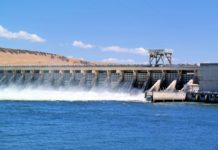In the face of growing environmental concerns and escalating energy costs, energy conservation in commercial buildings has become not just a choice, but a necessity. Commercial buildings consume a significant portion of the world’s energy, making their efficiency paramount.
Employing proven energy conservation techniques not only reduces environmental impact but also lowers operational expenses. Here are some of the simple techniques for optimizing energy consumption in commercial buildings:
1. Invest in Energy-Efficient Lighting & Appliances
Energy-efficient lighting reduces operational costs and minimizes environmental impact. LEDs are the frontrunners in energy-efficient lighting since they consume up to 90% less in lighting energy than traditional incandescent bulbs, making them the best option. They also have a longer lifespan, which means reduced maintenance and replacement costs. Take advantage of smart lighting controls too.
Installing motion sensors in offices, hallways, and restrooms ensures that lights are only on when needed. It also helps to design buildings with ample windows and incorporate light shelves or reflective surfaces to maximize natural light, reducing the need for artificial lighting during the day.
Your commercial establishments will also have a plethora of devices powering up your operations. Well, remember that even marginal energy savings per appliance can accumulate to substantial reductions in energy consumption and costs over time.
Use appliances, computers, and other office equipment certified as ENERGY STAR, which consume less energy. Many electronic devices consume energy even when turned off. Also, unplugging or using smart power strips prevents this “phantom” energy use.
Tip: Ensure you do conduct regular energy audits and implement an Energy Management System to provide real-time monitoring of all devices and systems, allowing for adjustments to optimize energy use.
2. Efficient HVAC Systems
HVAC systems are some of the largest energy consumers in commercial and residential buildings. Improving their efficiency can lead to significant energy savings, reduced operational costs, and a decreased environmental footprint. Ensure your HVAC systems are cleaned, calibrated, and well-maintained to improve their efficiency.
Consider dividing the building into zones to allow for tailored temperature control in different areas, optimizing energy use. You could also use programmable thermostats to automate heating and cooling schedules, ensuring optimal temperatures and preventing energy wastage.
3. Building Envelope Improvements
An optimized envelope reduces energy costs and ensures a more consistent internal climate. Add insulation to the walls to prevent heat transfer. Invest in high-performance windows and doors to reduce heat transfer. Install energy-efficient windows with low-emissivity coatings and double or triple panes to maintain indoor temperatures.
You should also seal gaps around windows and doors with weatherstripping to prevent drafts and air leakage. Also, consider using weather barrier coatings from Thermacote on the building surface to block drafts and air leaks, contributing to temperature regulation inside the building. That will lead to reduced energy consumption for heating and cooling.
4. Shift To Renewable Energy
As a commercial entity, you could also tap into nature’s abundant resources to decrease reliance on fossil fuels, reduce utility expenses, and substantially diminish carbon footprint. Install commercial solar photovoltaic (PV) panels to convert sunlight directly into electricity.
Solar arrays can be installed on rooftops, facades, or even as part of the landscaping. Renewable energy sources will significantly decrease greenhouse gas emissions and reduce dependency on grid electricity and fossil fuels, offering
Wrapping up
Energy conservation in commercial buildings is a multifaceted endeavour that requires a comprehensive approach. Implementing these proven techniques not only reduces operating costs and enhances environmental sustainability but also creates a comfortable and productive workspace for employees. As the global focus on sustainability intensifies, integrating energy conservation measures into commercial building design and operation is not just a prudent choice, but a critical responsibility.









